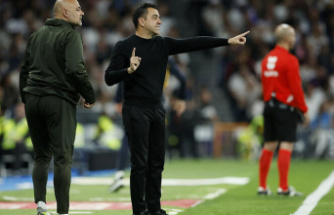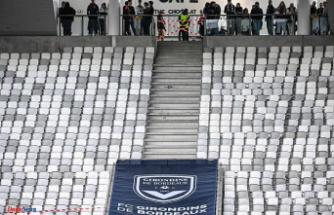UEFA is repealing a decades-old regulation: In the coming season, standing room will be allowed again in some countries in the European Cup. The yellow wall will be there for BVB for the first time in the Champions League, Union Berlin will probably get "real" home games.
25,000 fans sing fervently on Dortmund's legendary south stand, jumping around wildly arm in arm. These pictures have long been known from the Bundesliga. But from the coming season, the "yellow wall" can finally unfold its full force in the European Cup. The European Football Union (UEFA) is breaking a taboo after decades, the seat requirement is being softened and standing room is returning. This was decided by the UEFA Executive Committee.
Along with England and France, Germany is part of the pilot project longed for by many football romantics. The fans are also allowed to stand again in the Champions League, Europa League and Conference League, although the finals in all three competitions are not part of this regulation. At Borussia Dortmund alone, this will increase the stadium capacity from around 66,000 to over 80,000, and 25,000 people will be able to sit in the largest standing room in Europe.
Union Berlin could also be a big winner. There is more than 18,000 standing places at the Alte Försterei, but fewer than 4,000 seats. Therefore, an alternative to the Hertha Olympic Stadium was unavoidable up to now, "real" European Cup home games may now be possible. In principle, standing room is provided for home fans. The respective host decides whether guest fans are also allowed to stand.
Eintracht Frankfurt also celebrates. In the first Champions League season, the Hessians can offer their fans tickets for standing room and thus fully utilize the stadium capacity. "This is a wise and courageous decision by UEFA, which we very much welcome. Standing places at international matches have long since deserved a chance again and we are delighted that the long work of persuasion is now, also and especially with the help of Football Supporters Europe paid for," said Eintracht board member Philipp Reschke.
The seat requirement was in the 90s, among other things, a reaction to the Hillsborough disaster in 1989 with 97 dead. For international matches, the seat requirement that has been in place since then continues to apply. If the "observation program" is successful, the regulation could be extended both regionally and over time, UEFA wrote. The softening could also come sooner or later for international matches.
Spanish and Italian clubs could have participated in the testing phase now, but the qualified teams do not have stadiums with suitable seats. Most recently, England, the mother country of football, reopened all professional stadiums for "safe standing" after a six-month test phase at selected clubs.
"This isn't the old grandstand anymore, this is a whole different world and safety is paramount," said England Secretary of State for Sport Nigel Huddleston. Many fans hailed this as a return to basics. Thanks to improved video surveillance, in the future you will "know exactly who is in each individual seat and in each individual area," emphasized Huddleston. UEFA has now also recognized the advantages of standing room - now everything depends on the implementation of the supporters.












